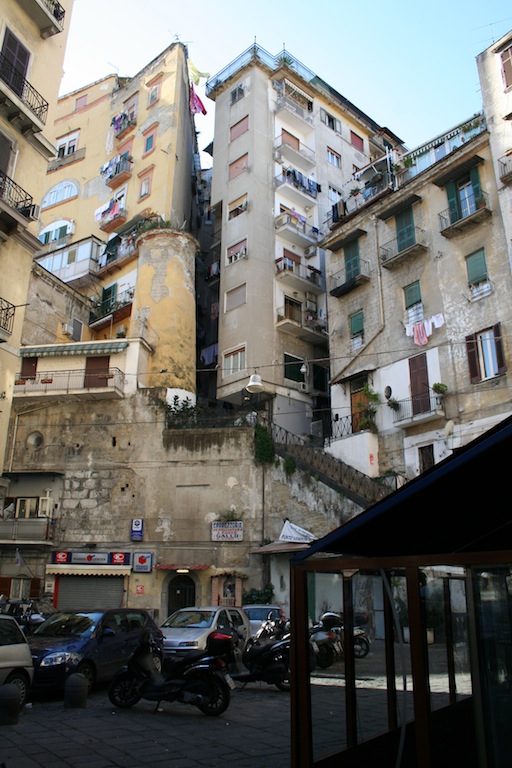NOIVIVI
An hour and a half on a brilliant weekend afternoon through subterranean Naples, its voids the city's own tufa quarries 30 meters profound to stack the ground shared by Vesuvius as so many mirroring shafts dizzyingly narrow and tall and tough: through sixteenth-century cisterns manned by climbing wellworkers, lowest on the social spectrum yet keepers of the city's vivification itself, uncontaminated water, from immense basins enlarging perhaps those of the settlement of Parthenope,
and Ferdinand the Fourth's military tunnel underground, built as carriage defense and quick getaway to the sea for the Bourbon king anxious in the wake of the Neapolitan bourgeois revolution and the uprisings of 1848,
turned, during the Second World War, back to the people in the form of a bomb shelter, before becoming a warehouse for impounded vehicles and finally, in our illustrious times, a dumping ground for every order of unsalvaged, unsalvageable garbage.
Struck suddenly unable to finish a sentence in translation, in what remains of an emergency room 30 meters underground, beyond the planks of burned-out beds and sparse oxygen masks, on the tuff wall incised with the signature of a Neapolitan child bearing a German name (transient of the Great War) and the date and time of a certain alarm, the surface whitewashed with calcium for dust management and makeshift brightness, this graffitto
NOIVIVI
["WE THE ALIVE"]
seared into the throat struck mute—
